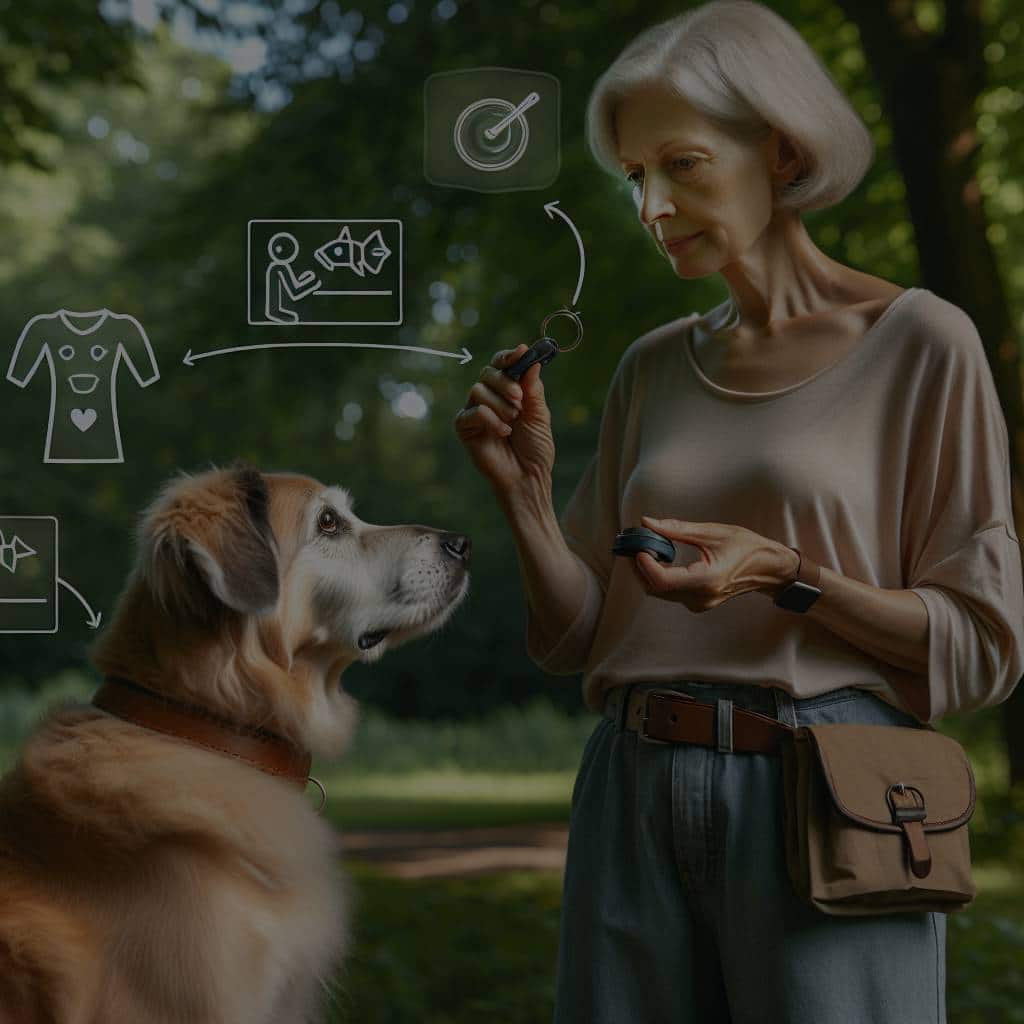What’s the Best Technique for Introducing Clicker Training to a Senior Dog?

Introducing new training techniques to a senior dog can be a daunting task, simply due to the adage, "You can’t teach an old dog new tricks." However, with a consistent, patient approach and employing effective methods such as clicker training, even dogs in their twilight years can learn to follow new commands and exhibit good behavior. This article will delve into the intricacies of using a clicker to train your older dogs, focusing specifically on the best techniques for a successful training experience.
Understanding Clicker Training
Before embarking on the actual training process, it’s imperative to understand what clicker training entails. Simply put, clicker training is a reward-based training method that uses a clicker, a small device that produces a distinct sound when pressed. This sound serves as a signal to the dog that a reward will follow, thus reinforcing good behavior.
Also read : What’s the Most Effective Method for Teaching a Dog Not to Bark at the Doorbell?
The concept is based on the science of animal behavior, specifically a learning principle called operant conditioning where behaviors are influenced by their consequences. Clicker training employs positive reinforcement, meaning that the dog will be rewarded for exhibiting the desired behavior, thus increasing the likelihood of the behavior being repeated.
The Essentials in Clicker Training
Begin your training sessions by equipping yourself with the necessary tools: a clicker and your dog’s favorite treats. When choosing a clicker, consider its sound level. A louder clicker may startle a senior dog, whereas a softer clicker may not be heard at all.
Topic to read : How to create a happy home environment for your cat
The treats you use should be something your pet loves and doesn’t usually receive. This will make the reward more motivating. Small, easily chewable treats are ideal for training sessions as they can be quickly eaten, allowing you to continue with the training without significant breaks.
The Initial Steps in Clicker Training
Introducing clicker training to a senior dog begins with associating the sound of the click with a reward. This step, known as ‘charging the clicker,’ involves clicking the device and immediately giving your dog a treat. Perform this step several times until your dog starts to anticipate a treat whenever they hear the click.
Remember to keep the training sessions short, ideally around 5-10 minutes at a time. Senior dogs may not have the energy or concentration for extended training sessions. Keep these sessions fun and positive. Any signs of frustration or impatience from you may deter your pet from participating in future sessions.
Incorporating Commands and Behaviors
Once your dog associates the clicker sound with a reward, you can start incorporating commands and behaviors into your training sessions. Begin with simple, basic commands such as ‘sit’ or ‘stay.’ When your dog successfully performs these commands, promptly click and reward them.
Gradually, you can introduce more complex behaviors or commands. Remember to click and reward only the behaviors you want to encourage. For instance, if you’re training your dog to sit, don’t click or reward if they lie down instead.
Precision is key in clicker training. The click must occur at the exact moment the desired behavior is exhibited. Clicking too early or too late can confuse your dog and slow down the training process.
Adapting to Your Dog’s Pace
It’s crucial to remember that every dog learns at its own pace. While some dogs might pick up on the training quickly, others may take more time. Senior dogs, in particular, might require more time to adapt to a new training method like clicker training.
Patience and consistency are your best friends during this process. If your dog struggles to understand a command or behavior, take a step back and simplify the task. Break it down into smaller, more manageable parts and gradually build up to the full command.
There’s no doubt that introducing clicker training to a senior dog requires time and patience. But with a positive approach and a well-planned strategy, you can use this effective training method to teach your old dog new tricks, enhance their behavior, and strengthen your bond with them. Remember, the key to a successful training experience is making it enjoyable for both you and your pet.
The Role of Patience and Consistency in Clicker Training
Patience and consistency, two virtues often mentioned in training dogs, become even more essential when clicker training an older dog. The process of associating the click with a treat, learning to follow commands, and internalizing the desired behavior may take longer in senior dogs compared to their younger counterparts. It’s crucial to remember that every dog is unique and learns at its own pace.
Being patient means giving your dog the necessary time to understand and respond to the commands. If your dog doesn’t get it right the first time, don’t get frustrated. Instead, repeat the command calmly and clearly, with a positive tone, and reward them immediately when they perform the correct behavior, even if it took several attempts.
Consistency, on the other hand, involves sticking to the same commands, the same clicker sound, and the same type of reward. Changing any of these variables during the training process can confuse your dog and hinder their learning. Consistency also means conducting regular training sessions, ideally at the same time every day. This regularity will help your dog anticipate and prepare for the training sessions, aiding in their learning process.
Remember, your temperament and approach significantly influence the training outcome. If you can maintain a patient, consistent, and positive approach, your senior dog will be more receptive to learning new tricks irrespective of their age.
Conclusion: The Reward of Clicker Training Your Senior Dog
Despite the time and effort required, the benefits of clicker training your senior dog extend far beyond improved behavior. It provides a wonderful opportunity for you and your pet to bond, creating a deeper understanding and mutual respect. The act of learning and successfully performing new tricks can also stimulate your dog’s mental health, promoting alertness and reducing the risk of cognitive decline often seen in older dogs.
Clicker training can breathe new life into the adage, "You can’t teach an old dog new tricks." With a well-planned strategy, patience, consistency, and the right clicker and treats, your senior dog can master new behaviors and commands. Remember, the goal of any training method, including clicker training, is not only to teach your dog but to make the process enjoyable for both of you.
In conclusion, clicker training is an effective, reward-based method suitable for dogs of all ages, including the senior ones. It encapsulates the essence of positive reinforcement in dog training and provides an enriching, enjoyable experience for both the trainer and the dog. It’s never too late to teach your dog new tricks, and a clicker might just be the tool to prove it.
